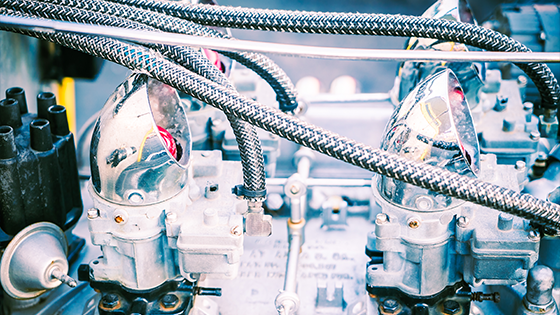
Introduction: What’s the Deal with Contact Displacement Sensors?
Let’s imagine a scenario: you’re in a workshop, and the machines need to detect the smallest movements of parts, where even a few microns of error could result in a faulty product. This is where displacement sensors become your best friend. Among the various types of sensors, active contact displacement sensors are a reliable choice. They measure displacement through physical contact, making them crucial in industrial manufacturing and automation, particularly in high-precision, high-demand environments.
Why are they so important? Because they not only provide real-time displacement data but also offer stable performance in complex environments. Whether it’s in machinery or automated systems, these sensors ensure that even the smallest movements are captured accurately.

How Does an Active Contact Displacement Sensor Work?
There are many types of displacement sensors on the market—some use optical or electromagnetic methods to detect motion, but active contact displacement sensors take a more “hands-on” approach by measuring displacement through physical contact. Think of it like this: it’s like using your finger to touch a surface and feel how smooth or rough it is. These sensors work in a similar way, with key components such as a probe, sensing element, and signal processing circuitry.
When the probe touches the surface of an object, it senses displacement. The probe’s minute movements are captured by the sensing element, and the mechanical motion is converted into electrical signals via the circuitry. This direct-contact method makes these sensors a go-to choice for applications where high precision is essential.
A Simple Process with Sophisticated Results
Let’s break down the working process: the probe touches the surface of an object, and when the object’s surface undergoes minor changes, the probe moves accordingly. This small movement is picked up by the sensing element and converted into electrical signals. These signals are then processed and amplified through the internal circuitry, and eventually transmitted to the data system. The entire sequence is like how your brain processes touch information when your finger glides over a surface—quick, efficient, and precise.
In an industrial setting, these sensors act like the “eyes” and “nervous system” of the machines, transmitting real-time displacement data to ensure every movement is perfectly on target.
Why Choose Active Contact Displacement Sensors?
Of course, it’s not just about sounding cool. What makes active contact displacement sensors truly compelling is how they perform in real-world applications. Their high precision makes them particularly effective in environments where extreme accuracy is required, such as high-end manufacturing or laboratory testing. They are also highly reliable in tough environments, such as high temperatures, pressure, or strong vibrations.
But there are limitations. Because these sensors measure through physical contact, the probe and the contact surface may wear out over time, which can affect their long-term performance. Additionally, they are sensitive to vibrations, which means more frequent maintenance may be necessary in extreme environments.
In comparison, non-contact displacement sensors don’t face wear-and-tear issues from surface contact, but their accuracy and stability may not always match the contact sensors in certain applications.
Where Are They Used?
Now that we’ve covered how active contact displacement sensors work and their advantages, where exactly are they used? These sensors have a broad range of applications, particularly in industries where precision and reliability are paramount. For example:
- High-precision manufacturing: These sensors are used to measure position changes in equipment, ensuring every step of the process remains within the precise range.
- Automotive and aerospace industries: Here, tiny part displacements can determine the safety and performance of a vehicle or aircraft, and sensors monitor these minute movements in real-time.
- Semiconductors and robotics: In these high-tech fields, sensors need not only to monitor displacement but also to work seamlessly with the system to perform complex real-time position control.
Trends and Future Prospects
As materials technology advances and smart manufacturing rapidly grows, the future for active contact displacement sensors looks promising. New materials are not only improving the durability of these sensors but are also significantly enhancing their measurement accuracy. Meanwhile, with the rise of the Internet of Things (IoT), more and more sensors are being integrated into smart manufacturing systems, forming a network for autonomous detection and intelligent adjustment. This means future sensors won’t just collect data—they will become integral parts of entire intelligent systems, even capable of self-calibration and adjustment.

Conclusion: Why Are They So Important?
In summary, active contact displacement sensors are not just a key tool in today’s industrial and automation sectors—they are set to play an even bigger role in future smart manufacturing. Their ability to capture precise displacement data through physical contact makes them irreplaceable in high-precision measurements and complex environments. As technology continues to advance, these sensors will undoubtedly become more versatile, providing more efficient solutions for industrial manufacturing.
